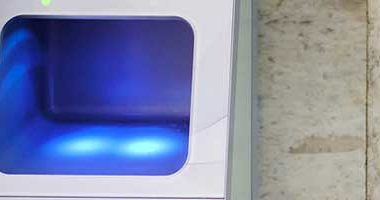For engineers, working from home is likely to require a change in working habits. However, for many, paperwork and the creative side of engineering can be conducted effectively from anywhere. With an increase in the miniaturisation of technology, it may also be possible to transport engineering kits and tools home for a seamless transition when working remotely. Working from home may be more difficult for engineers performing tests and repairs, although a large portion of this may be possible through automated systems.
Regardless of how much of an engineer’s role can be typically carried out at home, the insurgence of more remote workers will lead to a different way of working for everyone. The way that teams are managed and communication with colleagues is carried out will inevitably change. Some the changes that we are already seeing include:
1. Researching new technology
In an industry that is evolving and growing every day as a result of the development of the latest technology, staying at the forefront of innovation may not always be an easy task for engineers. However, the time saved by working from home and eliminating a commute, saves time for engineers to research areas of interest and new technologies.
Workers in the UK spend more than 10 days (251 hours) travelling to and from work every year.
How Britain Lives: A study by Lloyd’s Bank and YouGov
As creative, forward thinkers, engineers tend to be interested in new technology and innovation. For areas such as Industry 4.0, the Internet of Things (IOT) and 5G, developments in these areas are made quickly and continuously and so researching and reading around this type of subject area will be of great interest to innovative engineers. As developments in broad areas such as 5G are likely to impact and inform projects that engineers are working on today, maintaining an understanding of the latest advances in this area can set an engineer’s work apart from others. Working from home offers engineers more time to research new technologies which, in the long run, will enhance their projects and development.
2. Increased development
As such a large part of an engineer’s role involves research, this will inevitably feed into projects currently in progress and will provide inspiration for future development. Working from home enhances creativity. Without the distractions of colleagues and time spent working on tasks which may need to be performed on site, such as the maintenance, repair and testing of equipment, engineers will find that they have more time to be creative, enabling development and research to flourish. This is likely to prove invaluable in the coming weeks as initial research leads to an increase in development, resulting in greater output for the future.
3. Building a coherent vision
Physical time away from the workplace offers a new and refreshed perspective. By defining and shaping a coherent vision, engineers will be better able to work together to find solutions. Using platforms such as Slack, engineers have better visibility of issues and problems in real-time and can monitor any patterns that arise with ease. This is something that is often easier to do when everyone is working remotely, as collaboration increases with more streamlined communication. Whilst finding solutions to engineering problems will always require liaising with colleagues and face-to-face discussion, this is made possible with platforms like Zoom and Skype that facilitate this type of communication.
With an increased number of the workforce currently working from home, the inevitable result is a more coherent vision and an overarching perspective of the work everyone is carrying out. Improvements in collaboration will enhance communication in the long run, regardless of where colleagues are working. Once engineers return to the workplace, continue working from home or work remotely on the field, the skills and tools that they have developed during this period of uncertainty will remain hugely beneficial for the future, whatever shape that may take.
How can Distrelec help engineers embrace these new trends?
- Visit the KnowHow hub for interesting articles, infographics and interviews on the latest technologies and topics affecting the industry.
- Follow us on Twitter, Facebook and Linkedin where we are committed to bringing you the latest news and information to inform and inspire your work.
- Join us for friendly expert advice and information on the products that you may need now or in the future.











